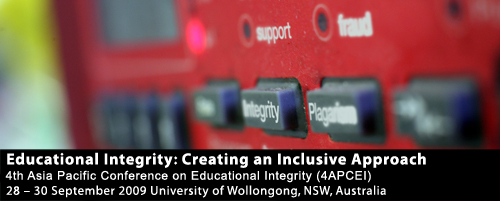Location
41.104
Start Date
29-9-2009 12:00 PM
End Date
29-9-2009 12:30 PM
Description
A review of the literature relating to plagiarism suggests that there is substantial variability in approach between institutions. Some institutions tend to view all occurrences of plagiarism as academic misconduct, whilst others take a more graded view - articulated through policy and procedures that aim to quantify ‘levels’ of severity. Measured approaches such as these tend to rely on guides to help assess the level of severity, typically encompassing the experience of the student, the amount of material plagiarised, and the likelihood of an intention to deceive. Such judgements lead to a graded response to the student which can result in a wide range of outcomes, from educational guidance and support to expulsion from the institution. However, the intent to deceive can be extremely difficult to establish. This paper will draw on a desktop study of institutional policies and procedures in Australia and other countries to sample and summarise the myriad approaches to the definition and determination of (specifically) intent in plagiarism. Based on the findings of this review, we suggest that the treatment of intent is, at best, rather inconsistent. A series of ‘probability factors’ are proposed to guide further research in this area.
Can we reliably determine intent in cases of plagiarism?
41.104
A review of the literature relating to plagiarism suggests that there is substantial variability in approach between institutions. Some institutions tend to view all occurrences of plagiarism as academic misconduct, whilst others take a more graded view - articulated through policy and procedures that aim to quantify ‘levels’ of severity. Measured approaches such as these tend to rely on guides to help assess the level of severity, typically encompassing the experience of the student, the amount of material plagiarised, and the likelihood of an intention to deceive. Such judgements lead to a graded response to the student which can result in a wide range of outcomes, from educational guidance and support to expulsion from the institution. However, the intent to deceive can be extremely difficult to establish. This paper will draw on a desktop study of institutional policies and procedures in Australia and other countries to sample and summarise the myriad approaches to the definition and determination of (specifically) intent in plagiarism. Based on the findings of this review, we suggest that the treatment of intent is, at best, rather inconsistent. A series of ‘probability factors’ are proposed to guide further research in this area.


